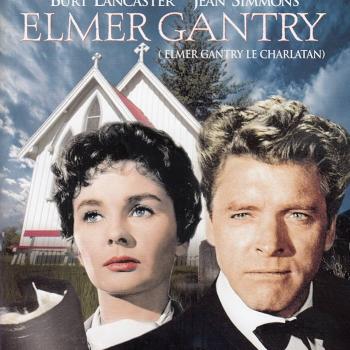 It's everywhere I look, this Catholicism, this faith that makes up my entirety. It forms my perceptions and shapes all that my senses take in. As a result, Catholic is all I see. I see it in the music I listen to, the movies I watch, the books I read, the everyday encounters with friends and family. I welcome this all-encompassing faith and find it a never-ending source of joy and inspiration.
It's everywhere I look, this Catholicism, this faith that makes up my entirety. It forms my perceptions and shapes all that my senses take in. As a result, Catholic is all I see. I see it in the music I listen to, the movies I watch, the books I read, the everyday encounters with friends and family. I welcome this all-encompassing faith and find it a never-ending source of joy and inspiration.
No, I have not magically survived in a Catholic vacuum devoid of secular media. Instead, my Catholic faith has taken the constant barrage of advertising and entertainment and filtered it all through a pair of Catholic colored lenses. Whether something is intentionally Catholic-themed or not—say a song on the radio—I recognize the God-inspired elements that served as its muse: love, hurt, disappointment, joy, and happiness—all the common emotions that we experience as humans and express through the art we create. Animals do not create, nor do they have the ability to appreciate art and beauty.
This appreciation and wonder for beauty is not some element just found in nature. It is exclusive to humans, because we have a soul.
If we were indeed just a bloody mess of technical hard-wirings, as some atheists would suggest, then humans would be a race of fancy machines, not creatures able to appreciate beauty and to create more beauty. A concerto would not move us to tears.
Nor are we just highly evolved animals. Apes do not make masterpieces, though I'm sure if you locked a monkey up with some paint and a canvas he might replicate a Jackson Pollock very nicely.
I know it can be argued beauty is subjective, in that I can look at any number of things and find them pleasing to my eye. The fact that I have the ability to discern what pleases me makes me human and not a robot or a distant relation to Chim-Chim. I can acknowledge and appreciate beauty and be moved by it. This transcends basic biology.
When we look at nature, God first's creation, we interpret it with wonder and awe. With my Catholic colored lenses I see more than the seasonal phenomenon of autumn. I see the sublime gift of natural wonder created by God, the first artist. An atheist might see the same scenery and appreciate the eye pleasing beauty in the colorful combinations of foliage, but nevertheless regard it as nothing more than the biological result of photosynthesis and leaves losing their green chlorophyll. A Catholic will see the Divine Physician that created biology and photosynthesis.
The same could be said for medical professionals. If ever there was a moment I doubted a Supreme Creator I simply need to open any anatomy book on my shelf and examine the human circulatory system. You will see the same vein patterns in our bodies found in a simple leaf when held up to sunlight. This is no accident that our inner workings are the same designs found in nature. It's because both are the handiwork of the same artist, God.
This is the difference in worldviews between the believer and the non-believer. Both can recognize beauty and wonder, and even appreciate it, but only one can give thanksgiving to the source of that beauty. Only one can view the sublime as miraculous and have it be a life-affirming and a transcendental experience. The non-believer or atheist views this magnificent world and its cosmos through a tunnel vision, one that bleakly filters out light and obscures the larger picture.
That light, of course, is God.
It was a long walk, stumbling about with the blinders of agnosticism on—having a very basic belief but lacking the knowledge to make the logical connections—to where I am now. I spent a major part of my life seeking "proof" before I suddenly realized that Beauty was the evidence of all I was looking for.
And now, Deo gratias, I see this beauty everywhere, through the tint of my Catholic colored lenses.
10/27/2011 4:00:00 AM





